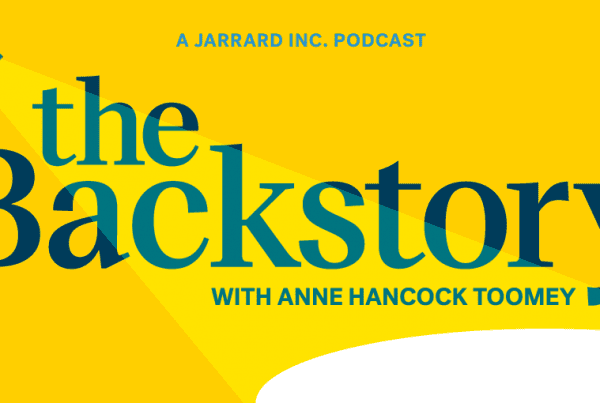The Big Story: Harris Leads Trump in Three Key States, Times/Siena Polls Find
“It is unclear how much of Ms. Harris’s bounce in the polls stems from the heightened excitement surrounding her ascension to the top of the ticket, or whether that momentum will last.”
Reading the Wind
4-minute read
Can you sense the moment when momentum shifts?
It’s that instant when there is a palpable change of energy in a game, or in a movement or in a board meeting. Can you feel that pre-fact flash when things that were headed in one direction are now clearly moving in another?
We’re living in a summer of momentum whiplash. Healthcare is not immune.
National politics? Donald Trump’s presidential campaign had the momentum coming out of the Republican National Convention in mid-July. Four weeks later, unexpected nominee Kamala Harris has captured the electoral energy, is advancing in the polls and money is pouring in ahead of this week’s DNC convention.
“The big question, though, is whether her campaign’s momentum can be sustained until November” or, asks the breathless horse-race coverage, is it merely a honeymoon?
Momentum is fickle.
The economy? Relatively steady stocks vibrated with a tremor last week when the market took a three-day dive, including the biggest one day drop for the S&P 500 in nearly two years. It ended with some improvement, but investors have nervous side-eyes. Was that a shift in market momentum we heard?
“Beware the vibes of August,” says Dow Jones.
Sports? Over in Paris earlier this month, Team USA trailed Serbia in a men’s basketball semifinal until the game’s fourth quarter. How did they pull it out? “Stephen Currey credits a ‘momentum shift’ in Team USA comeback,” says USA Today. “It was a sequence of plays that just built confidence and momentum.”
Momentum matters.
We make decisions and take action grounded in our sense of it. Momentum informs our gut, which we trust far more than inconvenient truths.
Left uncontested, momentum hardens into fact-resistant “common knowledge.” If you have it, you want to protect it. If it’s working against you, the momentum must be broken.
Healthcare’s Unhealthy Momentum and How to Break It
The momentum of the public’s perception of healthcare providers is not in the industry’s favor.
Over the past two years, we’ve tracked a steady and downward shift in support of hospitals.
A rising chorus of academic studies, regulatory pronouncements and congressional hearings have asked whether hospitals are doing enough, whether they’re fulfilling their community benefit obligations and whether they’re harming patients through their business practices and partnerships.
The message is penetrating.
For example, in one of our recent national surveys, we asked 1,000 US adults if their hospital is “providing enough community benefit.” Less than four in 10 people said yes.
In fact, 40 percent said they were unaware of the general concept of “community benefit” and could not offer an example of it. They don’t know what it is, let alone whether a hospital is providing it. So, they responded this way:
- Do hospitals care more about profits than caring for patients? Yes.
- Do people support increased government oversite of hospitals? Yes.
The risk, of course, is that these opinions solidify into the kind of uninformed common knowledge upon which bad laws and harmful regulations are created. It’s not trending well.
But there is good news. This momentum is fragile and can be broken.
We find that public opinion about hospitals can change dramatically with a modicum of education.
For example, when given a short list of defined “community benefit” services – ranging from charity care to transportation to Medicare and Medicaid shortfall coverage – opinions about the value of these benefits and who provides them swung big in the industry’s favor.
After seeing the list, nearly six in 10 said that their local hospitals provide “enough community benefit to keep their tax exemption.”
That massive swing was ignited by just a bit of clear information. It’s the equivalent of a perfect pass or a drive-saving first down. Not a lot on its own, but enough to jolt the crowd and cause people to reconsider. It’s enough to break the momentum.
The Five M’s of Momentum
Even if momentum feels like magic, there are real elements to creating it: a clever play, a gap recognized and exploited and, yes, a lucky bounce.
From politics to healthcare, the activity and effort comes from these:
- Message. As with all things, addressing momentum starts with a story – a narrative for the wider world about your motivation and mission.
- Messengers. The people delivering the message must be credible, clear and active. Whether it’s leaders or grassroots individuals, they must be able to effectively connect with their audiences and be busy doing it.
- Money. Financial clout fuels the ability to scale your story-telling momentum.
- Motivation. But money only takes you so far. Initiatives need the people involved to buy into the purpose, aka mission. The story only “works” if it motivates your audience to action.
- Media. Success with the above can lead to independent, supportive, third-party coverage. Handled well, it’s an added opportunity to spread the message to new audiences.
Momentum can feel subjective, elusive, transitory. But it’s not magic. Good momentum can be created – and bad momentum can be broken – intentionally. And while bottling something so seemingly capricious appears impossible, the practical medicine of a few M’s can help inspire a turn for the better.
Contributors: David Shifrin, Isaac Squyres, Emme Nelson Baxter
Image Credit: Shannon Threadgill




